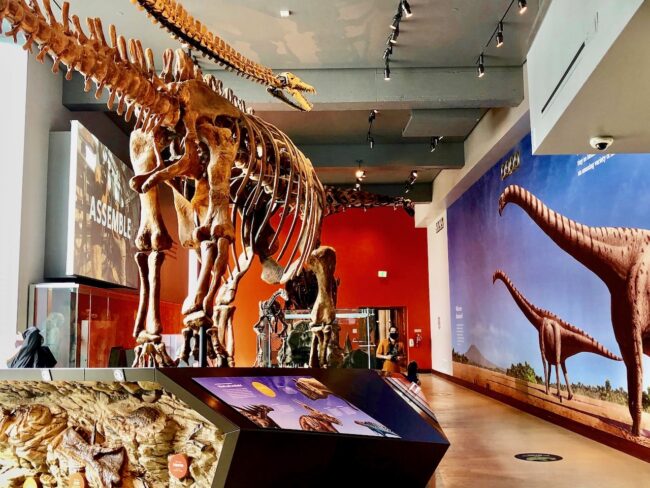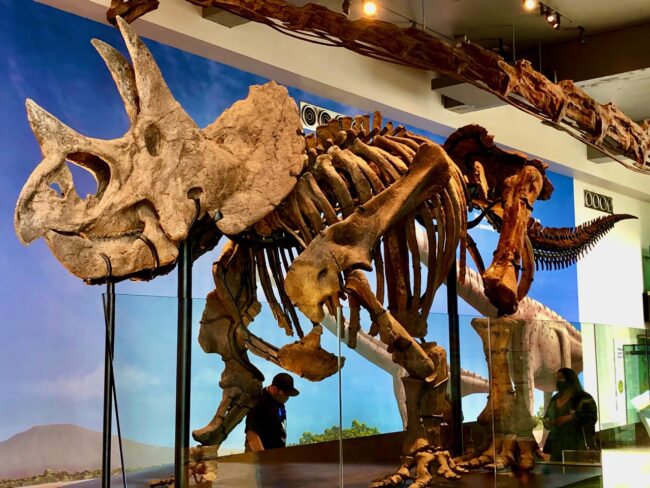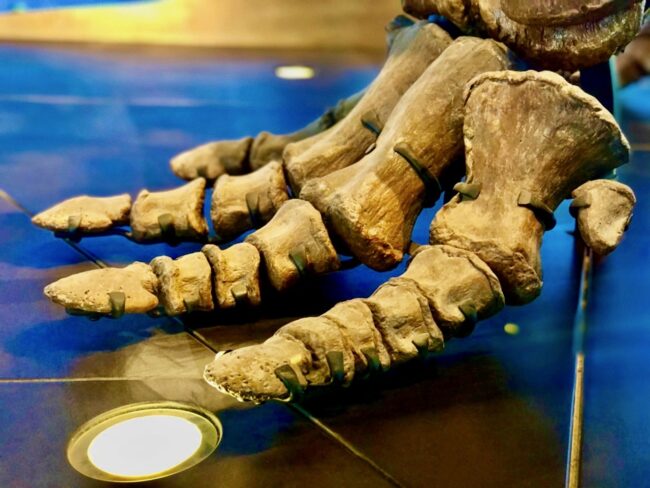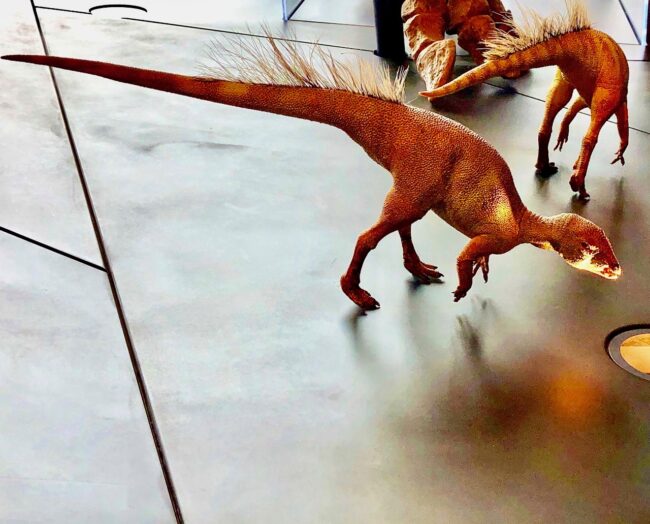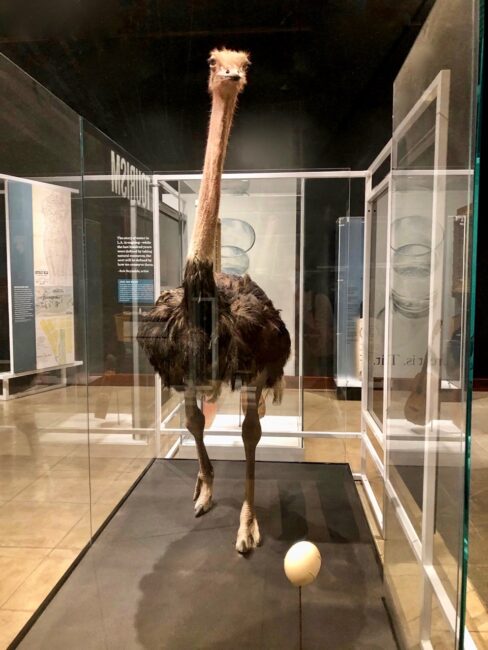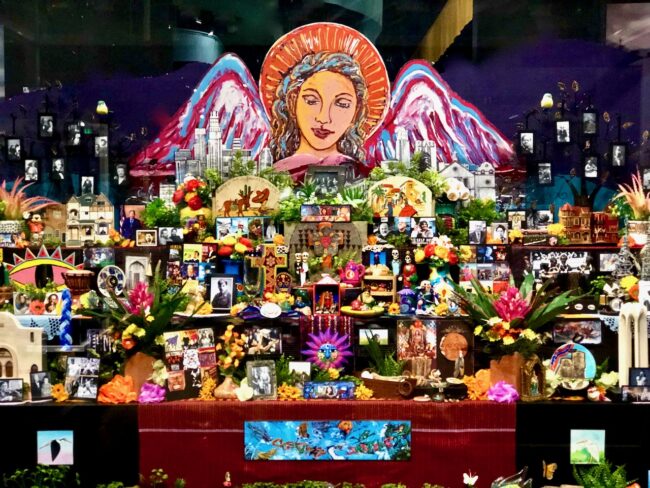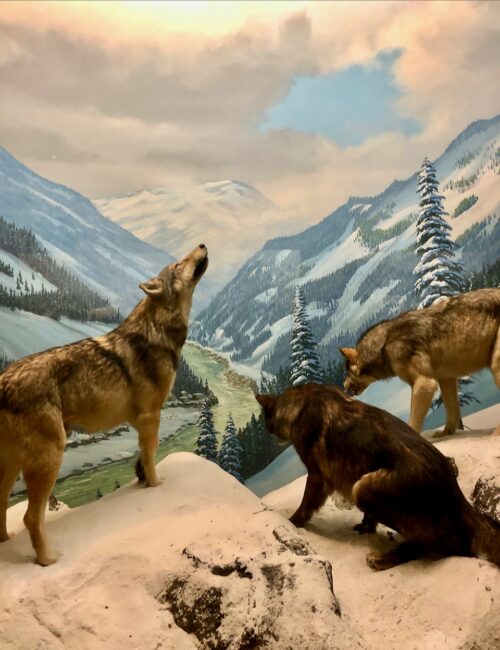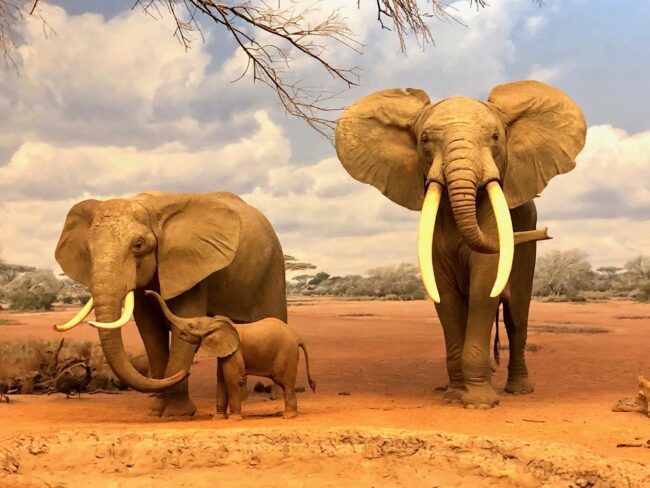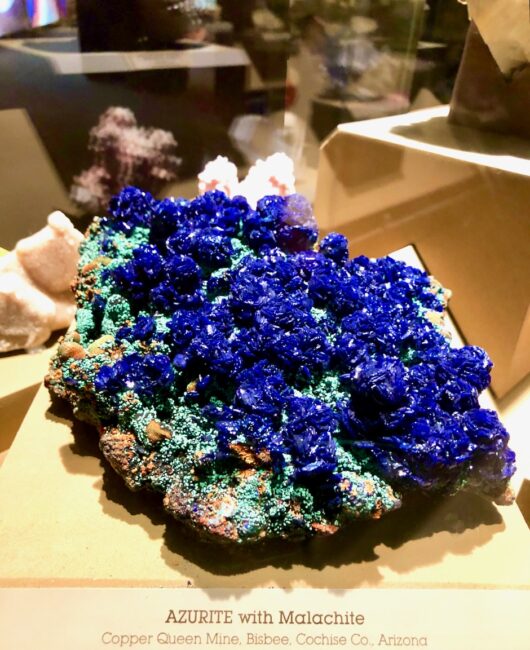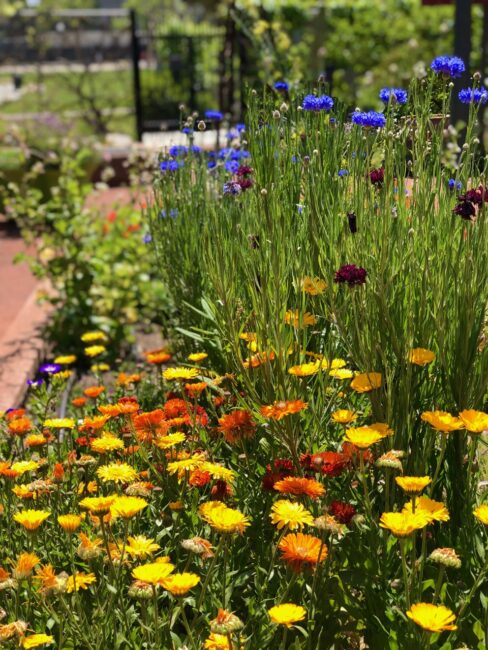
Filoli Historic House & Garden • Woodside
October 5, 2021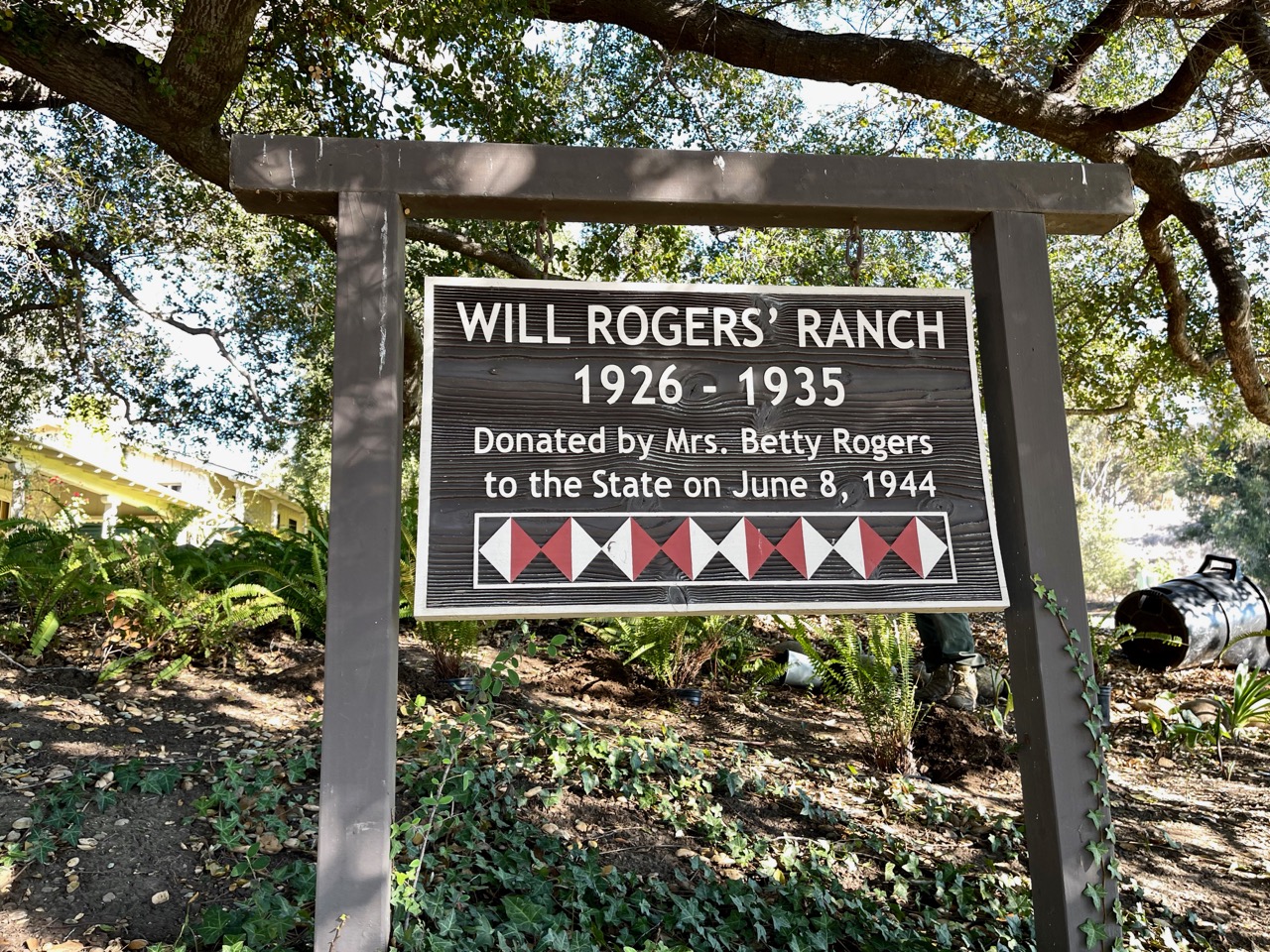
Will Rogers State Historic Park & Ranch – Pacific Palisades
February 4, 2022A Walk Through Prehistoric Times
Natural History Museum of Los Angeles County – Los Angeles
Tracy and I were in the mood for dinosaurs (despite Tracy being married to one), and with Jurassic Park being out of the question, we did the next best thing … we hopped in our car and drove to the Natural History Museum of Los Angeles County located in Exposition Park. When the Natural History Museum (NHM) opened its doors in 1913. it was called The Museum of History, Science and Art. The opening was quite an event, and a two-week “civic celebration ensued.” In 1961, the museum was divided into The Los Angeles County Museum of History and Science and the Los Angeles County Museum of Art (LACMA). LACMA moved into its own building in 1965, and the museum in Exposition Park eventually became known as the Natural History Museum of Los Angeles County.
Thanks to a modernization project and seismic upgrade done in time for its 100-year anniversary in 2013, the museum is a much better experience than it had been when we visited nearly two decades ago. The famed Rotunda is even more gorgeous (more on that later).
Covering 4 1/2 billion years of history, NHM contains about “35 million specimens and artifacts and is the largest natural and historical museum in the western United States.”
The museum is a lot more than just dinosaurs, but they are definitely the big draw. From a couple of huge rooms with dioramas that included animals from around the world …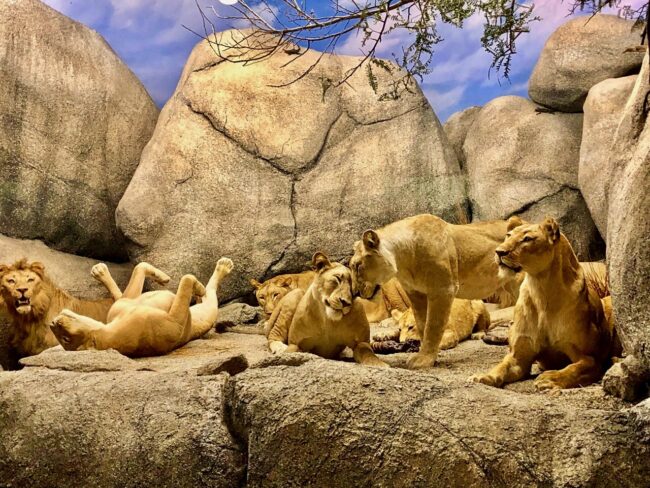
… to a myriad of other exhibitions, both indoors and out, NHM is a cool place to spend a few hours.
After purchasing our tickets and being reminded to properly distance and wear a mask …
… we entered the Nature Gardens.
Various flora greeted us on our short walk to the museum.
Informational signs pointed out some interesting details. I wanted to take a Squirrel Survey, but Tracy thought I was nuts.
Before hitting the interior of the museum we were directed to “A Living Wall,” where one can find a lot of little critters in the nooks and crannies. The sign told us to look for spider webs, but since I have enough of those at my house, we walked into the museum.
Tracy earned her butterfly wings, and we then flitted into the Nature Lab, which relates tales of the numerous non-human residents of Los Angeles County.
Like Lou Reed might have sang, it was time to “take a walk on the wild side.”
We learned about one of L.A. County’s most famous residents, P-22, a mountain lion who has somehow survived crazy human behavior for many years. (There was another sighting of him just a few days before I wrote this.)
We witnessed intriguing bugging devices.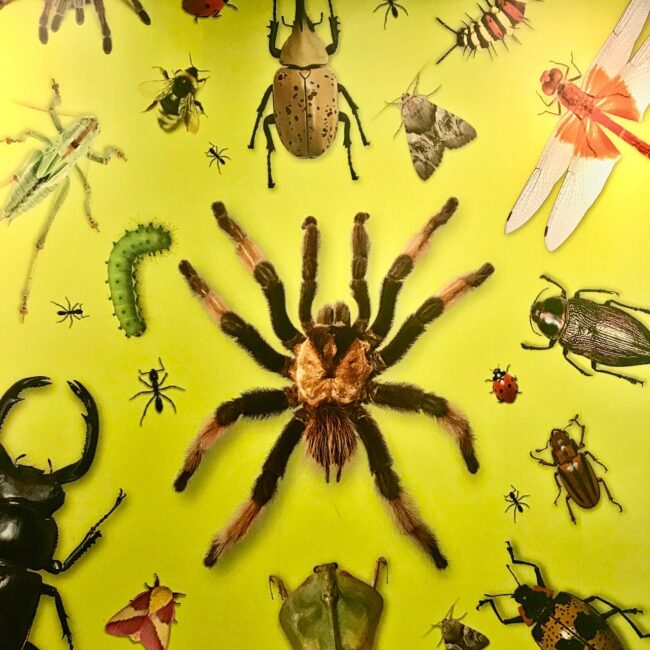
Once upon a time, many of these majestic feathered birds of prey made L.A. County their home. Unfortunately for these birds, those open spaces were gobbled up by homes and other signs of civilization, so only a few of them can be seen in the area, mostly in the San Gabriel Valley. This was, in essence, the first Eagles Farewell Tour.
Although probably geared for kids, these cartoons about squirrels, opossums …
… and even rats were quite interesting. No wonder these guys are hard to catch.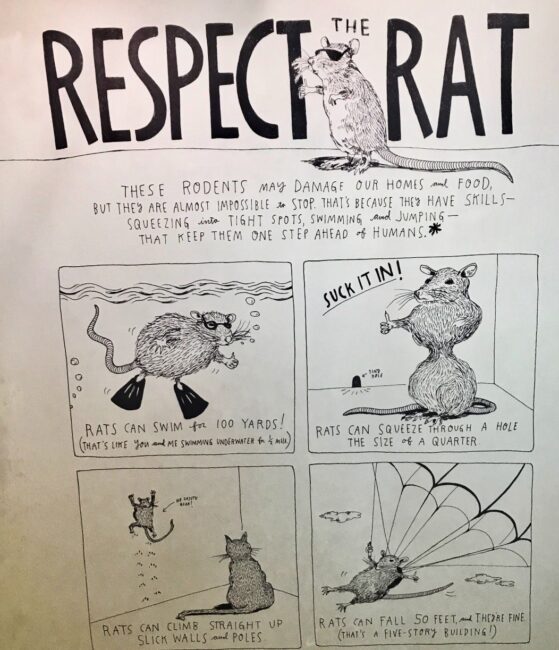
Beep! Beep!
After nearly being devoured by a Tyrannosaurus rex, we escaped to the Dinosaur Hall, which contains 20 mounted skeletons of these reptilian archosaurs that roamed the Earth millions of years ago.
We were met by a Triceratops, which is made up from bones of several specimens. Although an herbivore, those feet could cause quite a bit of damage if you were stepped upon.
Something we did not neglect, was a Thescelosaurus neglectus, who was one of the last big dinosaurs to become extinct more than 60 million years ago.
And here all these years, I thought dinosaurs were around in One Million Years B.C. Raquel aged well.
We paid our respects to the smallest dinosaur in North America, a Fruitaden.
I’ve always found dinosaurs fascinating, and the ones at NHM are pretty spectacular.
Everybody seemed angry and on the prowl, but whenever I glanced at the upper arm bones, it somehow seemed humerus to me.
This fellow should have been the star of Jaws!
After being raptured by raptors, we stepped out of the beasts …
… and into beauty. From 60 million years ago, we were now transported to only 100 years ago in the restored Haaga Family Rotunda, which was the museum’s original Beaux Arts entrance. In front of us stood the Three Graces statue by Julia Bracken Wendt, who was one of Los Angeles’ first prominent sculptors. The figures represent the disciplines of art, history, and science, and have also been called the Three Muses.
The sensational stained glass dome was created by Walter Horace Judson of the famed and acclaimed Judson Studios in South Pasadena. The great-grandson of Walter Horace Judson, David, was involved with the restoration of the stained-glass skylight.
Below is the dome taken from the Rose Garden. (photo courtesy of NHM).
On the other side of the Rotunda is the Age Of Mammals, whether they be from land or sea.
We saw one of the original football referees.
There were lots of old bones, including mine …
… but there was no reason to stick your head in the sand.
Another door exiting the Rotunda led into an area called “Becoming Los Angeles.” This room’s exhibits told story of the diverse people and interesting places that were instrumental in creating L.A.
Many displays showed numerous ethnic groups, all who helped develop and facilitate the city’s growth.
Thanks to the following exhibit, our house now participates in Día de los Muertos (Day of the Dead), “which celebrates, honors and remembers their deceased loved ones.”
The altars here depicted the “cultural and environmental diversity” of the region, by “revisiting the history of Los Angeles.”
Altars depicted scenes …
… from many nationalities and races.
Not all the people shown in these altars were dead, which was good news for Sandy Koufax and Herb Alpert.
One of my favorite recollections of the NHM were their life-sized African and North American dioramas of wildlife. (photo below courtesy of NHM).
As its website says, “Immerse yourself in the sweaty jungles of Tanzania or the frozen tundra of the Arctic while staring gorillas and grizzly bears in the eye.”
The photos Tracy took looked like these dioramas were paintings, but these are actual large-sized dioramas showing the animals in their native habitat.
We decided not to dance with these wolves.
Bison and caribou roamed the windows.
I felt a little sheepish when Tracy took this shot.
Goo goo g’joob!!
I had never heard of an Arabian oryx.
Try as you might, there ain’t no way to hide your lion eyes.
I’ll never forget the elephants.
Here, they frolic with some friends who will always stick their necks out for you.
Now it was time to catch up with probably the most well-known of all the dinosaurs, the Tyrannosaurus rex …
… or as fans of the song Bang A Gong call him, T. Rex. In the Grand Foyer, old T-Rex looks like he’d like to bite the head off of Mr. Triceratops (photo courtesy of NHM).
I had always thought Godzilla was a T-rex, but I found out later he had originally been a T-rex, before being mutated by radiation. Godzilla was later changed to a Godzillasaurus, who could only be killed by the late, great Dr. Serizawa. I watched way too much TV as a kid.
Tracy and I made a quick stop at an exhibition featuring colorful minerals.
Then we made our way upstairs to take one last look at our dino friends.
Strolling outside, we took a quick peek at the Rose Garden, however it was closed on the day we visited, which turned out to be a thorn in Tracy’s side.
From every angle, the NHM architecture is stunning.
There’s a little garden path in this area, and the flowers were fragrant and colorful.
One of these guys must have escaped from the nearby Butterfly Garden (also closed on this day).
A squirrel enjoyed the sunshine.
Having to exit from the other side of the building, we were in for a whale of a time. These boness came from a 7,000- pound, 63 foot skeleton that was put together showing it in mid-dive. It was acquired in 1926.
Our day at the museum was over, but it provided some cool memories. Besides the regular rooms to visit, NHM also features temporary exhibits. Currently (in early 2022), there is a Dr. Joan Goodall exhibit entitled “Becoming Jane,” which sounds very interesting. It runs through April 2022, so hopefully we’ll get down there and take some photos.
 The NHM is a delight for people of all ages. I’ll make no bones about this museum with bones, you should definitely pay it a visit. My friend on the left will be glad you did.
The NHM is a delight for people of all ages. I’ll make no bones about this museum with bones, you should definitely pay it a visit. My friend on the left will be glad you did.
Natural History Museum of Los Angeles County
900 W Exposition Blvd.
Los Angeles, CA 90007
213.763.3466
Wednesday – Monday 9:30 a.m. – 5 p.m.
$15 (Seniors & Students $12) (Child $7)
Parking: $15
Metro Stop: Expo Park /USC or Expo/Vermont
nhm.org



